
RADIATION PHYSICS AND CHEMISTRY
Scope & Guideline
Bridging Theory and Application in Radiation Research
Introduction
Aims and Scopes
- Radiation Detection and Dosimetry:
Research in this area includes the development of innovative dosimetry techniques, the characterization of dosimeters for various types of radiation, and the assessment of patient and occupational radiation exposure during medical procedures. - Material Science and Radiation Shielding:
This encompasses the study of new materials designed for effective radiation shielding, including the synthesis and characterization of glass, polymers, and composites that exhibit enhanced radiation absorption properties. - Health Physics and Radiobiology:
Investigations in this scope focus on the biological effects of radiation exposure, including studies on radiosensitivity, radiation damage mechanisms, and the development of protective strategies against radiation-induced harm. - Environmental and Industrial Applications:
Research articles often address the applications of radiation technologies in environmental remediation, food safety, and waste management, highlighting the use of radiation in enhancing the safety and quality of food products. - Innovative Radiation Technologies:
The journal also explores advancements in radiation technologies, including novel radiation sources, imaging techniques, and radiation treatment methodologies, emphasizing their practical applications in medicine and industry.
Trending and Emerging
- Advanced Dosimetry Techniques:
There is a marked increase in research focusing on novel dosimetry methodologies, including the development of polymer gel dosimeters, real-time dosimetry systems, and the application of machine learning for dose optimization. - Nanotechnology in Radiation Applications:
Emerging studies highlight the incorporation of nanomaterials to enhance radiation shielding properties and biological applications, such as the use of nanoparticles for targeted radiotherapy and improved dosimetry. - Sustainability and Eco-Friendly Materials:
Research on the development of sustainable radiation shielding materials, particularly those utilizing recycled or bio-based components, is on the rise, aligning with global sustainability goals. - Radiation Therapy Innovations:
There is a growing emphasis on advancements in radiation therapy techniques, including stereotactic body radiotherapy (SBRT) and intensity-modulated radiation therapy (IMRT), focusing on improving treatment efficacy and minimizing side effects. - Radiobiological Research:
An increasing number of articles are focusing on the biological effects of radiation, particularly in the context of cancer treatment, highlighting the significance of understanding the mechanisms behind radiation-induced damage.
Declining or Waning
- Basic Nuclear Physics Studies:
Papers focusing solely on fundamental nuclear physics concepts or theoretical models without direct applications in radiation safety or medical physics have seen a decrease, possibly due to a shift towards more applied research. - Traditional Radiation Protection Protocols:
There seems to be a reduction in publications that solely discuss conventional radiation protection protocols without integrating innovative or modern methodologies, reflecting a trend towards more advanced and technology-driven approaches. - Generalized Radiation Chemistry:
Research articles that broadly cover radiation chemistry without specific applications in dosimetry, material science, or health physics are becoming less frequent, indicating a preference for targeted studies with practical implications.
Similar Journals
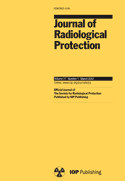
JOURNAL OF RADIOLOGICAL PROTECTION
Transforming knowledge into protective practices.Journal of Radiological Protection, published by IOP Publishing Ltd, is a pivotal academic journal dedicated to advancing knowledge in the fields of radiology and radiation protection. Since its inception in 1988 and continuing through to 2024, this journal provides a platform for the dissemination of innovative research and critical reviews that explore the effects of radiation exposure on health and the environment. With an Impact Factor that places it among the Q3 category in Medicine, Public Health, Environmental and Occupational Health, as well as in Waste Management and Disposal, the journal is vital for professionals, researchers, and students keen on understanding the implications of radiological science. The Journal of Radiological Protection aims to contribute to improved practices and policies in radiation safety, making its findings essential for those involved in environmental health and public safety initiatives. Articles are accessible through various academic databases, ensuring widespread dissemination among the scientific community, thereby enhancing the journal's stature and influence in radiological research.

RADIATION MEASUREMENTS
Advancing the Frontiers of Radiation Science.RADIATION MEASUREMENTS is a highly regarded academic journal published by Pergamon-Elsevier Science Ltd, focusing on the interdisciplinary field of radiation science and instrumentation. With an ISSN of 1350-4487 and an E-ISSN of 1879-0925, this journal aims to disseminate cutting-edge research and practical advancements from 1994 to 2024. It holds a commendable position in the Scopus rankings, being categorized in the top quartiles (Q2) for both Instrumentation and Radiation, reflecting its significance in the scientific community with a notable percentile of 64th and 59th, respectively. Although it does not offer Open Access options, the journal serves as a vital resource for researchers, professionals, and students seeking to explore innovations that shape the understanding and measurement of radiation phenomena. With a commitment to high-quality research, RADIATION MEASUREMENTS continues to contribute essential knowledge in the fields of physics and astronomy, positioning itself as a key publication for those dedicated to advancing radiation technology and its applications.
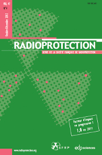
RADIOPROTECTION
Unveiling the science behind radiation and its impact on society.RADIOPROTECTION, published by EDP SCIENCES S A, stands as a pivotal journal in the multidisciplinary fields of Nuclear Energy, Public Health, and Environmental Safety. With an ISSN of 0033-8451 and an E-ISSN of 1769-700X, this journal delves into the crucial aspects of radiation protection and its interactions with health and environment, providing a platform for researchers and professionals to disseminate their findings and insights. Despite being classified in the Q4 quartile for Health, Toxicology and Mutagenesis in 2023, its Q3 status in prestigious categories such as Nuclear Energy and Engineering, and Public Health, underscores its relevance in contemporary academic discourse. The journal continues to expand its cachet with converged years of publication from 1977 to 1981 and 1988 to 2024, ensuring a rich history of scholarly contributions. Access options for interested readers include traditional subscriptions, allowing for comprehensive engagement with a broad range of topics surrounding safety, sustainability, and risk management. Whether you are a researcher, professional, or student, RADIOPROTECTION serves as an essential resource for expanding understanding and fostering innovation within its field.

Applied Radiation and Isotopes
Pioneering Insights in Radiation ApplicationsApplied Radiation and Isotopes is a premier journal dedicated to the dissemination of high-quality research in the fields of radiation and isotopes, published by PERGAMON-ELSEVIER SCIENCE LTD. With a commendable impact factor reflecting its respected standing, this journal ranks in the Q3 category within Radiation according to the 2023 evaluation, emphasizing its relevance in the scientific community. Operating out of the United Kingdom, it has been a crucial platform for innovation and knowledge sharing since its inception, covering a wide array of applications ranging from the medical to the industrial sectors. Researchers can access a wealth of articles through its online platform, although it currently does not offer open access options. Applied Radiation and Isotopes is thus an essential resource for researchers, professionals, and students aiming to stay abreast of the latest developments in radiation physics and isotopic applications, making impactful contributions to the field.
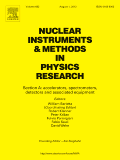
NUCLEAR INSTRUMENTS & METHODS IN PHYSICS RESEARCH SECTION A-ACCELERATORS SPECTROMETERS DETECTORS AND ASSOCIATED EQUIPMENT
Innovating detection and measurement in high energy physics.NUCLEAR INSTRUMENTS & METHODS IN PHYSICS RESEARCH SECTION A is a leading journal published by Elsevier, dedicated to the advancements in accelerators, spectrometers, detectors, and associated equipment relevant to the fields of nuclear and high energy physics. With its ISSN 0168-9002 and E-ISSN 1872-9576, this journal fosters knowledge sharing among physicists and researchers globally, providing a critical platform for both theoretical and experimental studies. Currently ranked in the Q2 quartile for both Instrumentation and Nuclear and High Energy Physics, the journal maintains a robust position in the competitive Scopus rankings, with noteworthy placements that underline its scholarly impact. As of 2023, it occupies the 38th rank in Nuclear and High Energy Physics and the 79th in Instrumentation, illustrating its relevance in the scientific community. Covering research spanning from its inception in 1983 to the projected completion in 2024, the journal caters to a diverse audience of researchers, professionals, and students eager to stay abreast of the latest innovations and techniques in the realm of nuclear instrumentation. Although it primarily operates under subscription-based access, it is instrumental in disseminating pivotal findings and experimental methodologies that drive progress in the scientific community.

Radiation Detection Technology and Methods
Advancing the Frontiers of Radiation ScienceRadiation Detection Technology and Methods is a prominent academic journal published by Springer Singapore Pte Ltd, dedicated to advancing the field of nuclear and high-energy physics, as well as nuclear energy and engineering. Established in 2017, this journal provides a platform for the dissemination of pioneering research and innovative methodologies in radiation detection technology. As of 2023, it holds a commendable Q2 ranking in both the categories of Nuclear and High Energy Physics and Nuclear Energy and Engineering, underscoring its significance in fostering scholarly discourse within these vital fields. With ISSN 2509-9930 and E-ISSN 2509-9949, the journal aims to cater to a diverse audience of researchers, professionals, and students, emphasizing open access to knowledge. The journal's contributions are particularly crucial for those engaged in the development of safer and more efficient radiation detection techniques, ultimately bridging the gap between theory and practical applications in energy security and health physics. For researchers seeking a dedicated outlet for their work, Radiation Detection Technology and Methods represents an invaluable resource and an opportunity to influence the future of radiation science.
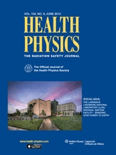
HEALTH PHYSICS
Transforming Research into Public Health InsightsHEALTH PHYSICS is a leading academic journal dedicated to the study and dissemination of knowledge in the fields of radiology, epidemiology, and health toxicology. Published by Lippincott Williams & Wilkins, this esteemed journal has been a cornerstone of research since its inception in 1958, and it continues to foster important discussions and advancements in the discipline. With a notable impact factor and consistently ranking in the Q2 and Q3 quartiles across various categories in 2023, HEALTH PHYSICS serves as a vital resource for scholars, practitioners, and students seeking the latest insights and methodologies in the management of radiation exposure and its health implications. While the journal does not offer open access, it remains a critical platform for peer-reviewed articles that contribute to public health and environmental safety. The journal's comprehensive scope and historical significance underscore its importance in advancing knowledge and practices within its field, making it an essential read for anyone engaged in the multidisciplinary realms of health physics.
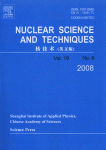
Nuclear Science and Techniques
Empowering Discoveries in Nuclear Physics and EnergyNuclear Science and Techniques is a distinguished peer-reviewed journal published by Springer Singapore Pte Ltd, dedicated to advancing the fields of nuclear science and engineering. With an impressive impact factor reflected in its 2023 quartile rankings—Q2 in Nuclear and High Energy Physics and Q1 in Nuclear Energy and Engineering—the journal serves as a vital resource for researchers, professionals, and students alike. Covering a breadth of topics from nuclear physics to energy applications, it offers a platform for innovative research and developments in the nuclear domain. The journal, indexed under ISSN 1001-8042 and E-ISSN 2210-3147, aims to foster scientific exchange and collaboration within the community by publishing high-quality articles that contribute significantly to the field. Committed to maintaining an open-access ethos, it enhances visibility and accessibility of critical knowledge, making it an essential source for current insights and trends in nuclear science.
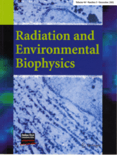
RADIATION AND ENVIRONMENTAL BIOPHYSICS
Pioneering Research for a Safer TomorrowRADIATION AND ENVIRONMENTAL BIOPHYSICS, published by SPRINGER, is a premier journal dedicated to advancing the understanding of the interactions between radiation and biological systems within environmental contexts. With an ISSN of 0301-634X and an E-ISSN of 1432-2099, this journal has established itself as a vital source of innovative research across multiple disciplines, including Biophysics, Environmental Science, and Radiation Studies, maintaining a significant presence since its inception in 1974. The journal is categorized within the Q3 in Biophysics and Q2 in both Environmental Science and Radiation for 2023, indicating its relevance and influence in these domains. Researchers and professionals will find the journal's rich content invaluable, offering insights that could impact public health, environmental policy, and radiation safety. Although it is not an open-access journal, RADIATION AND ENVIRONMENTAL BIOPHYSICS provides critical information through its rigorous peer-reviewed articles, making it an essential resource for academics and practitioners aiming to contribute to this evolving field.
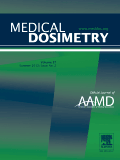
Medical Dosimetry
Transforming Oncology with Innovative Dosimetry SolutionsMedical Dosimetry is a distinguished journal published by Elsevier Science Inc, dedicated to the advancing field of medical dosimetry and its applications within oncology, radiology, and nuclear medicine. With its ISSN 0958-3947 and E-ISSN 1873-4022, this journal serves as a crucial resource for researchers and professionals aiming to enhance their understanding of radiation treatment planning and dosage calculations. Encompassing a comprehensive range of topics from clinical dosimetry to technology assessment, Medical Dosimetry has been disseminating significant findings since its establishment in 1988, contributing to the continuous development of best practices in patient care and safety. The journal currently holds a Q3 ranking in various categories, reflecting its pivotal role in the research community, while not currently offering open access, it remains an essential reference for scholars advancing the techniques utilized in medical imaging and treatment. By fostering a platform for high-quality research, it aims to bridge the gap between theoretical studies and clinical applications, making it a vital addition to any medical library.